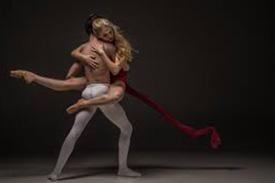 Dancers are the ultimate masters of multi-tasking, and it seems now there is scientific research to support this. Studies at the University of Maryland in partnership with the University of Houston over the past few years have revealed that dancers use multiple areas of their brains simultaneously while dancing: one part controls movement without expressive intention, another part imagines movement qualities. These parts work together to execute movement while also making higher-level decisions.
Dancers are the ultimate masters of multi-tasking, and it seems now there is scientific research to support this. Studies at the University of Maryland in partnership with the University of Houston over the past few years have revealed that dancers use multiple areas of their brains simultaneously while dancing: one part controls movement without expressive intention, another part imagines movement qualities. These parts work together to execute movement while also making higher-level decisions.
For a dancer it is no sweat to perform a series of steps on stage while portraying a character, and making a split-second decision to change one step to another depending on how they feel. Dancers’ brains appear to be programmed differently from non-dancers’ brains. They are simultaneously thinking about the sequence and pattern of steps, their focus, timing and the qualities of their lightness and strength all at once.
The research done by the universities helps explain why professional dancers can process complex choreography in a split second; their whole brains are engaged with the matter at hand. Cerebral synchronisation makes dancers proficient at remembering groups of steps and their patterns, which are stored lower in the brain. The front of the brain is used for expression and making those split-second decisions on stage if they are needed.
It is hard to say whether dancers are born with this ability to multi-task, or whether it is something that is learnt and adapted throughout their dance experience. It seems some dancers are innately wired like this; others develop these abilities over time. As a result, this research has implications regarding dance education. In classes, dancers typically focus on the sequence or the technique, therefore only engaging one part of the brain. It is clear therefore that more is needed to give dancers images that help them with expressive qualities, imagery that evokes feeling.
